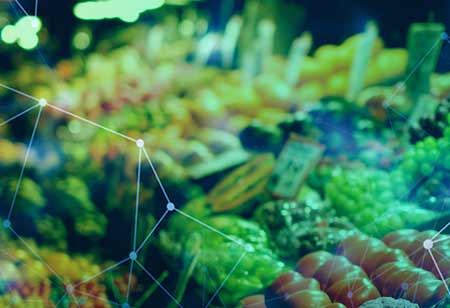Thank you for Subscribing to Food Business Review Weekly Brief
Significance of Food Safety and Testing
Food safety risks can cost lives. Each year, countries worldwide incur economic losses owing to food safety issues.

By
Food Business Review | Saturday, July 02, 2022
Stay ahead of the industry with exclusive feature stories on the top companies, expert insights and the latest news delivered straight to your inbox. Subscribe today.

The primary objective of food safety testing is to evaluate whether or not food products are safe to eat.
FREMONT, CA: Food safety risks can cost lives. Each year, countries worldwide incur economic losses owing to food safety issues. Low- to middle-income nations are estimated to incur annual losses of at least $100 billion due to foodborne diseases. Humans have access to a clean, safe, and sustainable food supply. To ensure the safety of the food supply, the food industry has developed a series of testing protocols.
No one can survive without enough nourishment, demonstrating the significance of having access to safe food. The only way for the average customer to determine whether a product is safe is through sensory or physical investigation. So how would they determine whether the food they are consuming is safe? Herein lies the responsibility of food enterprises to ensure food safety. As part of the human right to adequate food, all food industry organizations must safeguard the public's security through food safety.
The first element that comes to mind when discussing foodborne diseases is contamination by disease-causing microorganisms such as viruses, parasites, bacteria, and molds. In truth, chemical compounds and physical objects can cause foodborne illness and associated harm.
To detect these dangers, specific methods of food safety testing are utilized. Using these scientific approaches, food companies ensure that their products are free of potentially harmful food contaminants. Food safety testing programs are also part of the solution to achieve global harmonization of food safety and security and meet the vast global demand for safe food. With adequate food safety testing and quality assurance, food loss and manufacturing of dangerous food, as well as other obstacles associated with foodborne illnesses, are eliminated.
Testing for food safety can also be used to assess foods modified to resist extreme environments. These results can be utilized to inform and educate the public regarding the safety or risks of such foods.
The primary objective of food safety testing is to assess the safety of food products for human consumption. The results of tests validate food companies' claims that they comply with food safety regulations and legislation and that their operations meet food safety requirements. These tasks are crucial for giving the finest and safest consuming experience and ensuring food quality. The necessities for conducting food safety tests emphasize the significance of food safety.
Food handlers and food manufacturers are responsible for food safety testing processes. Every food business is required to conduct specified food safety testing and maintain a food safety testing laboratory to meet the following objectives:
Safety and sickness prevention
Food safety testing evaluates the safety of food products. Additional testing can support procedures for determining whether the correct doneness of the meal was attained. Obtaining samples or a food ingredient from the processed batch and evaluating them for the presence of target microorganisms is one way to conduct these tests. These evaluations can determine if it is safe to release products onto the market. Testing for food safety is specific, accurate, and repeatable. Consequently, reputable food safety testing methodologies can be utilized ethically.
Educate consumers
Perhaps the best illustration of the role of food safety testing as a kind of consumer education is the situation of genetically modified foods (GMO). In response to consumers' never-ending concerns about GMOs, the FDA has determined that all genetically modified food products must undergo rigorous safety testing and be tested in food safety laboratories. Appropriate food safety testing can examine newly created consumer items before their distribution to decrease consumer exposure and maintain their safety. Typically, such evaluation results undergo peer review to assure their accuracy.
Sustainability
Methods of scientific food safety testing contribute to the solution for sustainability and rising food demand. By guaranteeing that the foods produced are safe, losses are minimized, and a consistent food supply can keep up with the rising demand. To create a sustainable future, it is essential to emphasize the complementary aspects of food safety and security.
Increased efficiency
Regarding sustainability, the absence of foodborne illnesses means that all community members may execute their duties uninterrupted. Foodborne infections contribute to the key issues that deplete medical resources and reduce service quality in any industry. Testing for food safety provides a foundation for ensuring the entire community's safety.






